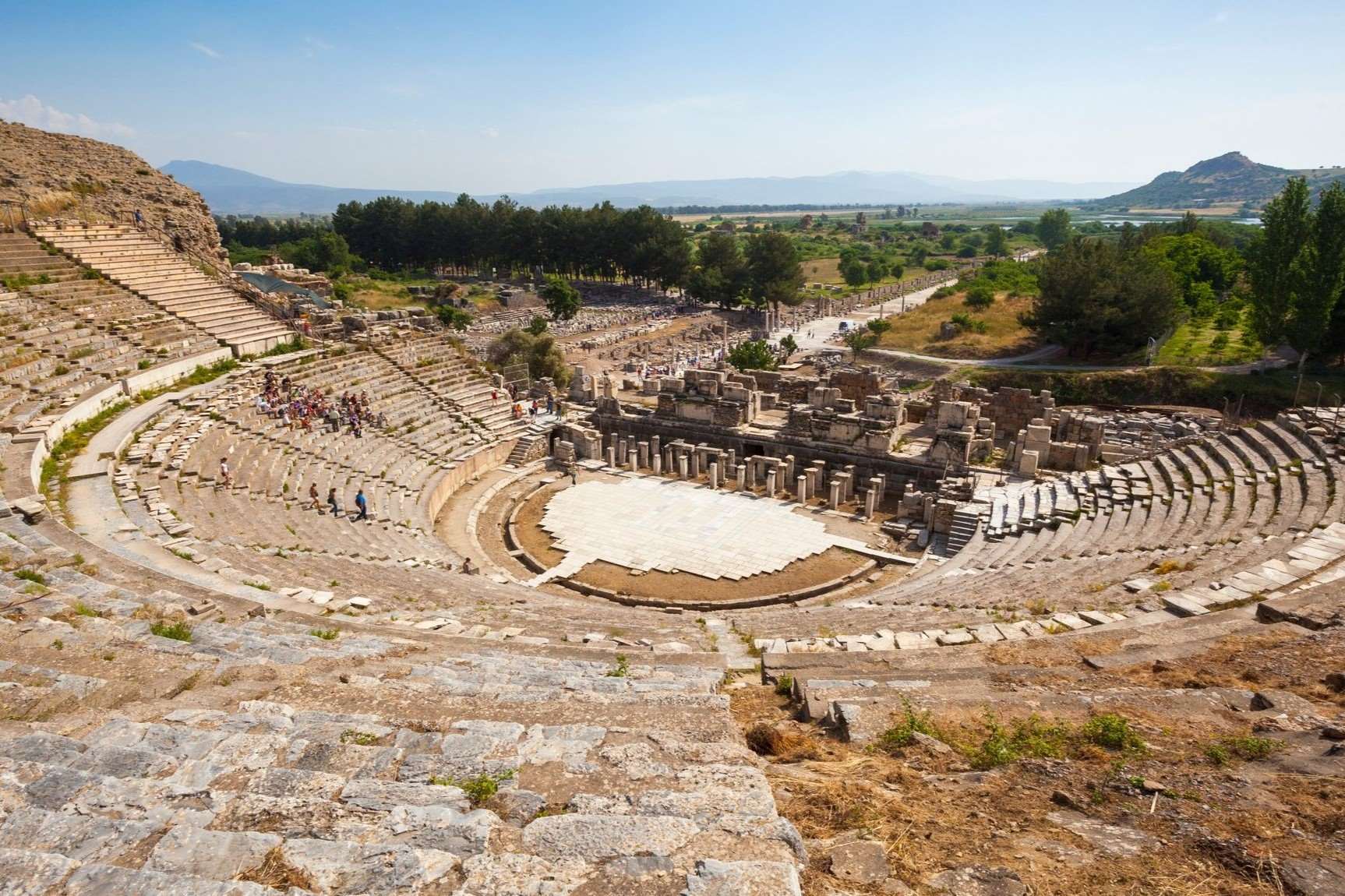Exploring The Mysteries Of Ephesus Ruins

Have you ever wondered what it would be like to walk through an ancient city frozen in time? Ephesus ruins offer a glimpse into the past, showcasing the grandeur of Roman architecture and culture. Located in modern-day Turkey, this archaeological site boasts impressive structures like the Library of Celsus, the Great Theatre, and the Temple of Artemis. Each corner of Ephesus tells a story, from bustling marketplaces to sacred temples. Whether you're a history buff or just curious about ancient civilizations, visiting Ephesus will transport you back thousands of years. Ready to step into history? Let's explore the wonders of Ephesus ruins together.
Ancient Theater
The Ancient Theater of Ephesus stands as a testament to the grandeur of Roman architecture. This colossal structure once held up to 25,000 spectators, hosting everything from gladiator fights to dramatic performances.
Stage Building: The stage building, or skene, was a multi-storied structure adorned with intricate carvings and statues. It served as a backdrop for performances and housed dressing rooms for actors.
Cavea: The seating area, known as the cavea, was divided into three sections. The lower section was reserved for VIPs, the middle for ordinary citizens, and the upper for slaves and women.
Orchestra: The circular orchestra at the theater's base was where the chorus performed. It also served as a space for religious ceremonies and political gatherings.
Library of Celsus
The Library of Celsus is one of Ephesus' most iconic landmarks. Built in honor of Roman Senator Tiberius Julius Celsus Polemaeanus, this library once held over 12,000 scrolls.
Facade: The library's facade is a marvel of ancient engineering, featuring Corinthian columns and statues representing wisdom, knowledge, and virtue.
Reading Room: Inside, the reading room was designed to protect scrolls from humidity and heat. Niches in the walls held the scrolls, while a central statue of Celsus watched over the scholars.
Underground Vault: Beneath the library lies an underground vault where Celsus himself was buried. This unique feature made the library both a place of learning and a mausoleum.
Temple of Artemis
Once considered one of the Seven Wonders of the Ancient World, the Temple of Artemis was a magnificent structure dedicated to the goddess Artemis.
Columns: The temple boasted 127 columns, each standing 60 feet tall. These columns were intricately carved and painted, showcasing the wealth and artistry of Ephesus.
Altar: At the heart of the temple was a grand altar where sacrifices were made to Artemis. This altar was adorned with reliefs depicting scenes from mythology.
Sacred Area: Surrounding the temple was a sacred area where priests and priestesses conducted rituals. This area was off-limits to ordinary citizens, adding to the temple's mystique.
Terrace Houses
The Terrace Houses of Ephesus offer a glimpse into the lives of the city's elite. These luxurious homes were built on the slopes of Bülbül Mountain and featured stunning mosaics and frescoes.
Mosaics: The floors of the terrace houses were covered in intricate mosaics depicting scenes from mythology and daily life. These mosaics are remarkably well-preserved, showcasing the skill of ancient artisans.
Frescoes: The walls of the terrace houses were adorned with vibrant frescoes. These paintings depicted everything from landscapes to portraits, adding color and life to the homes.
Heating System: The terrace houses featured an advanced heating system known as the hypocaust. This system circulated hot air beneath the floors, providing warmth during the colder months.
Basilica of St. John
The Basilica of St. John is a significant religious site in Ephesus. Built over the supposed burial site of St. John the Apostle, this basilica was a major pilgrimage destination.
Tomb of St. John: At the center of the basilica lies the tomb of St. John. This sacred site attracted pilgrims from across the Christian world, seeking blessings and miracles.
Baptistery: The basilica featured a large baptistery where converts to Christianity were baptized. This octagonal structure was adorned with mosaics and inscriptions.
Bell Tower: The basilica's bell tower offered stunning views of Ephesus and the surrounding countryside. It also served as a lookout point, warning the city of approaching danger.
Ephesus Awaits Your Discovery
Ephesus offers a unique glimpse into ancient history. Walking through its ruins, you can almost hear the echoes of past civilizations. The Library of Celsus, Temple of Artemis, and Great Theatre are just a few highlights that make this site unforgettable. Each structure tells a story, from grand public gatherings to everyday life in ancient times.
Visiting Ephesus isn't just about seeing old stones. It's about connecting with a world that shaped much of our modern culture. Whether you're a history buff or just curious, Ephesus has something to offer. Pack your bags, grab your camera, and get ready to step back in time. This ancient city is waiting to share its secrets with you. Don't miss out on this incredible journey through history. Ephesus is more than a destination; it's an experience.

